
The Romulans are an extraterrestrial race in the American science fiction franchise Star Trek. They first appeared in the series Star Trek (1966–1969). They have appeared in most subsequent Star Trek releases, including The Animated Series, The Next Generation, Deep Space Nine, Voyager, Enterprise, Discovery, Picard, Strange New Worlds, and Lower Decks. They appear in the Star Trek feature films Star Trek V: The Final Frontier (1989), Star Trek VI: The Undiscovered Country (1991), Star Trek: Nemesis (2002) and Star Trek (2009). They also appear in various other spin-off media, including books, comics, toys and games.

Vulcans, sometimes referred to as Vulcanians, are a fictional extraterrestrial humanoid species in the Star Trek universe and media franchise. In the various Star Trek television series and films, they are noted for their attempt to live by logic and reason with as little interference from emotion as possible. Known for their pronounced eyebrows and pointed ears, they originate from the fictional planet Vulcan. In the Star Trek universe, they were the first extraterrestrial species to make contact with humans.

Spock is a fictional character in the Star Trek media franchise. He first appeared in the original Star Trek series serving aboard the starship USS Enterprise as science officer and first officer and later as commanding officer of the vessel. Spock's mixed human–Vulcan heritage serves as an important plot element in many of the character's appearances. Along with Captain James T. Kirk and Dr. Leonard "Bones" McCoy, he is one of the three central characters in the original Star Trek series and its films. After retiring from active duty in Starfleet, Spock served as a Federation ambassador, and later became involved in the ill-fated attempt to save Romulus from a supernova, leading him to live out the rest of his life in a parallel universe.

Nyota Uhura, or simply Uhura, is a fictional character in the Star Trek franchise. In the original television series, the character was portrayed by Nichelle Nichols, who reprised the role for the first six Star Trek feature films. A younger Uhura is portrayed by Celia Rose Gooding in the 2022 prequel series Star Trek: Strange New Worlds, while an alternate timeline version of Uhura has been portrayed by actress Zoe Saldaña in the feature films Star Trek (2009), Star Trek Into Darkness (2013), and Star Trek Beyond (2016).
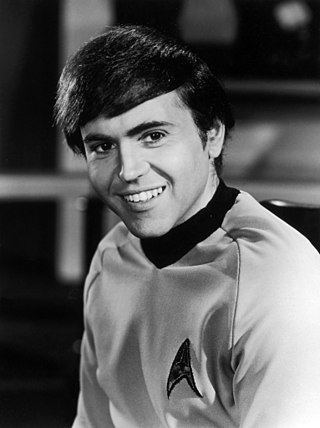
Pavel Andreievich Chekov is a fictional character in the Star Trek universe.
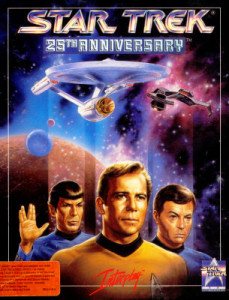
Star Trek: 25th Anniversary is an adventure video game developed and published by Interplay Productions in 1992, based on the Star Trek universe. The game chronicles various missions of James T. Kirk and his crew of the USS Enterprise. Its 1993 sequel, Star Trek: Judgment Rites, continues and concludes this two-game series.
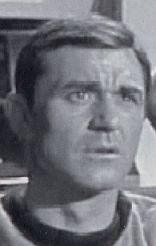
"Balance of Terror" is the fourteenth episode of the first season of the American science fiction television series Star Trek. Written by Paul Schneider and directed by Vincent McEveety, it first aired on December 15, 1966.

"Unification" is a two-part episode of the syndicated American science fiction television series Star Trek: The Next Generation which features Leonard Nimoy as Spock. The first of the two episodes earned a 15.4 household Nielsen rating, drawing over 25 million viewers, making it one of the most watched episodes in all seven seasons of The Next Generation's run.
This article discusses the fictional timeline of the Star Trek franchise. The franchise is primarily set in the future, ranging from the mid-22nd century to the late 24th century, with the third season of Star Trek: Discovery jumping forward to the 32nd century. However the franchise has also outlined a fictional future history of Earth prior to this, and, primarily through time travel plots, explored both past and further-future settings.
"The Deadly Years" is the twelfth episode of the second season of the American science fiction television series Star Trek. Written by David P. Harmon and directed by Joseph Pevney, it was first broadcast December 8, 1967.
"The Enterprise Incident" is the second episode of the third season of the American science fiction television series Star Trek. Written by D. C. Fontana and directed by John Meredyth Lucas, it was first broadcast September 27, 1968.

Star Trek: The Role Playing Game is a role-playing game set in the fictional Star Trek universe published by FASA Corporation from 1982 to 1989.
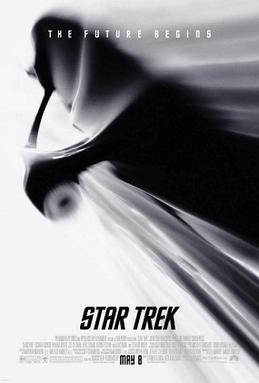
Star Trek is a 2009 American science fiction action film directed by J. J. Abrams and written by Roberto Orci and Alex Kurtzman. It is the 11th film in the Star Trek franchise, and is also a reboot that features the main characters of the original Star Trek television series portrayed by a new cast, as the first in the rebooted film series. The film follows James T. Kirk and Spock aboard the USS Enterprise as they combat Nero, a Romulan from their future who threatens the United Federation of Planets. The story takes place in an alternate reality that features both an alternate birth location for James T. Kirk and further alterations in history stemming from the time travel of both Nero and the original series Spock. The alternate reality was created in an attempt to free the film and the franchise from established continuity constraints while simultaneously preserving original story elements.

The Ashes of Eden is a Star Trek novel co-written by William Shatner, Judith Reeves-Stevens, and Garfield Reeves-Stevens as part of the "Shatnerverse" series of novels. This is Shatner's first Trek collaboration.

Star Trek: Starfleet Academy is a Star Trek PC simulation game developed and published by Interplay in 1997. The game simulates the life of a typical Starfleet cadet, with the player learning the basics of flying a starship and engaging in roleplaying with a crew of cadets, with the eventual goal of becoming captain of their own ship. The game included full motion video featuring William Shatner, Walter Koenig, and George Takei reprising their roles from the original television series and movies, and a multiplayer simulation mode allowing for up to 32 players.

Star Trek: Shattered Universe is a space-combat simulator video game by American studio Starsphere Interactive set in the Star Trek Mirror Universe, as portrayed in the original series episode "Mirror, Mirror". Originally intended to be one of the last Star Trek titles released by Interplay Entertainment, it sat for 2 years before being completed by TDK Mediactive; it was released for the Xbox and PlayStation 2. The player takes control of one-man fighter spacecraft and engages in several missions.
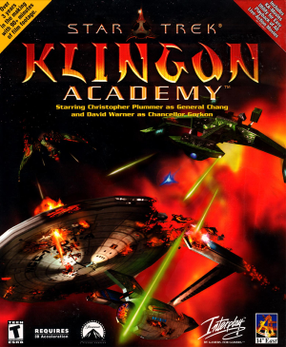
Star Trek: Klingon Academy is a space flight simulator video game developed by 14 Degrees East, an internal development house of publisher Interplay Entertainment. The game follows a young Klingon warrior named Torlek as he attends the Elite Command Academy, a war college created by General Chang to prepare warriors for a future conflict with the United Federation of Planets. Christopher Plummer and David Warner reprised their respective roles as Chang and Gorkon for the production of Klingon Academy.
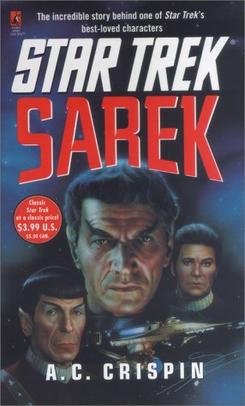
Star Trek: Sarek is a novel by A. C. Crispin, set in the fictional Star Trek universe. It is set shortly after the motion picture Star Trek VI: The Undiscovered Country. Ambassador Sarek of Vulcan discovers evidence of a complicated plot to cripple the United Federation of Planets; he must work to find out who is behind it while also coming to terms with the death of his human wife, Amanda Grayson. A secondary storyline follows the adventures of Peter Kirk, nephew of James T. Kirk, who inadvertently becomes caught up in the enemy's schemes.

Star Trek: Of Gods and Men is a noncanonical and unofficial Star Trek fan film, which contains many cast members from the Star Trek TV series and movies. Described by the producers as a "40th-anniversary gift" from Star Trek actors to their fans, it was filmed in 2006, but its release was delayed until 2007–08. It was not endorsed by the rights-holders of Star Trek, but has been covered on the official Star Trek website.

Star Trek: Countdown is a four-issue comic book prequel to the 2009 film Star Trek by IDW Publishing. It follows the characters of Spock and the Romulan Nero during the year 2387, detailing the events that cause them to travel to the 23rd century. The story serves as both a lead up to the film, and as a continuation of the Star Trek: The Next Generation franchise.
















